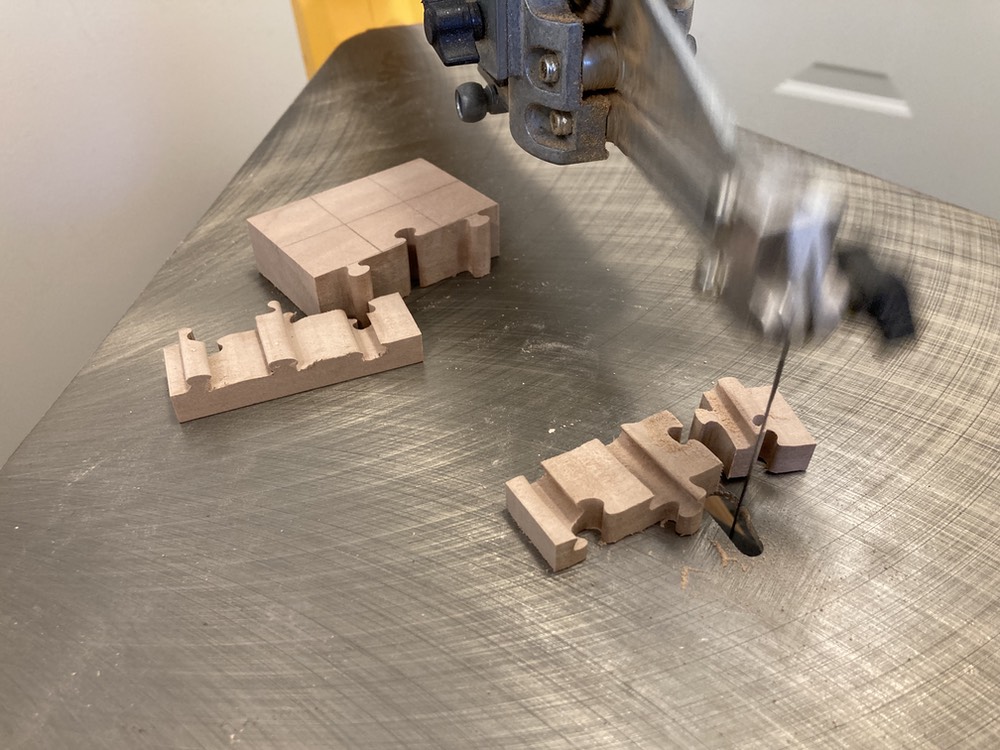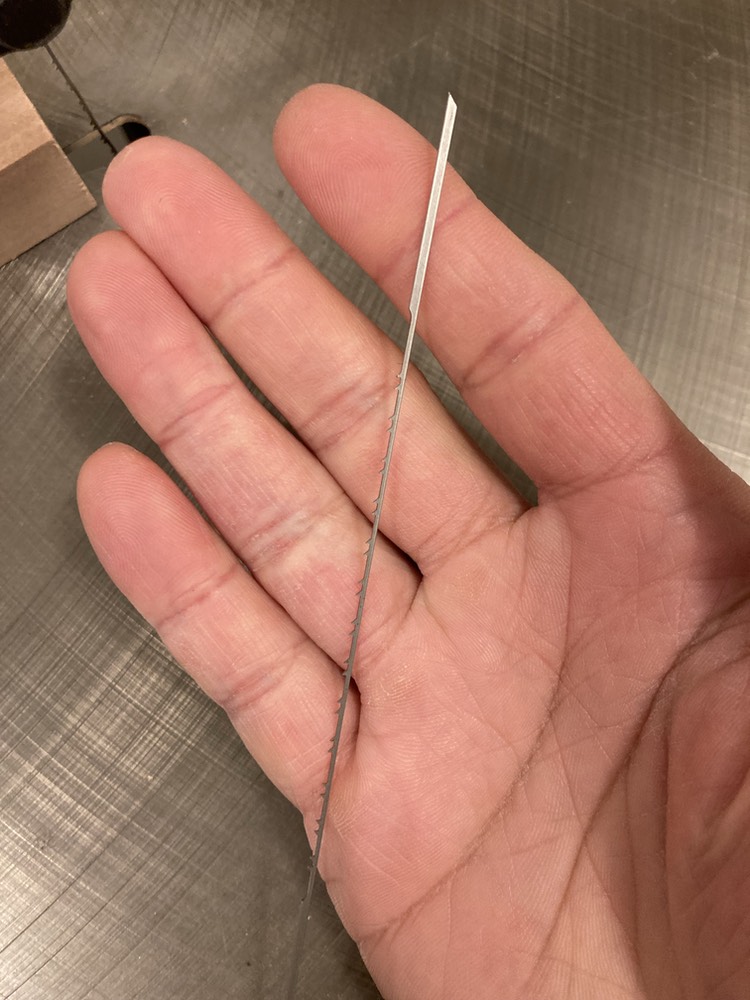When woodworkers think about the scroll saw, they often think of a tool that cuts slowly and is perhaps the power saw with which one is least likely to cut themselves. And, compared to stationary tools like the table saw, bandsaw, and mitre saw, I feel that it is an accurate description Perhaps a hand-held power saw like a jigsaw is safer to use, as the user’s hands are usually on the tool a fixed distance away from the blade at a safe distance.
But that’s not to say scroll saw work is not without risk. On a scroll saw, the delicate nature of the work that makes the scroll saw the best choice usually puts the user’s hands very near the blade – zero to six inches away, let’s say. This largely depends on the length and width of the workpiece, as well as the stiffness since flexible pieces may require support closer to the blade to prevent it from lifting which could cause bending or breakage to the workpiece and/or blade.
The other risk inherent with the scroll saw is the high amount of manual skills and focus required to manoeuvre the material through the blade. The only sort of guide a scroll saw affords is a table, to help ensure one angle of the cut is constant (unlike a hand-held coping saw or fret saw where all accuracy of the cut is up to the user). As with a bandsaw, great care must be taken guiding the workpiece along the desired cut line. However, due to the small, delicate nature of most scroll-sawn parts, a small over-cut or deviation from the cutline of 1/8 inch (or less) can be the difference between success and failure of the part.
Working at this scale requires good lighting, steady hands, patience, and blade selection and setup is key. When cutting my 3D jigsaw puzzles (whose pieces are typically 1 x 1 x 3/8 inch), I often find myself looking very closely at the cutline as I guide the wood through the blade and think to myself that I’m probably more likely to get hurt by being struck by the top of the upper blade clamping assembly (which goes up and down with the blade) than I am getting cut by the blade itself.

If you’ve never looked at scroll saw blades, you might be surprised at how small they are – at a casual glance, many look like a piece of wire. The tooth direction of some of the finest blades is difficult to determine visually and the best way is to lightly run your finger along them to feel in which direction they catch. Narrower blades cut tighter corners but are more fragile and liable to break (which isn’t a scary or dangerous thing, in my opinion – just a nuisance having to replace the blade). Finer teeth make cleaner, smoother cuts, but if the gullets in front of the teeth are not large enough to clear the sawdust, heat build-up and burning of the workpiece can occur. Blades with finer teeth also cut more slowly in material of a given thickness. This means more time to make the same cut, and, more importantly to me, affords more control and less chance of cutting too far. Over-cutting (that is, cutting off a detail or making a part too weak) is the greatest risk I face when cutting my puzzles.

I must choose a blade that cuts cleanly without burning, while permitting sufficient control through the intricate cuts. The decision is made more complicated with the varying thickness of cuts in a typical 3D jigsaw puzzle. Effective material thicknesses that the blade passes through may range from 1/8 to over 1 inch. As with most decisions there is a compromise to be made. I can either change blades with every material thickness, select a blade on the finer side and hope for no burning, coarser side and rely on my skill and dexterity, or right in the middle and hope for no burning and rely on my skill.
Anyways, I’ve been busy restocking my supply of 18-Piece Puzzles since I sold my last one last week. You can order yours here.


Having just bought your exact saw.. it is a bit nerve wracking cutting thin stock. Amazed me how the blade does not just move up and down but forward as well. It’s a blur for sure.
Hi Morgan,
It’s a good saw, but the design of the saw (and most scroll saws) does mean that the blade travels in an arc, so forward and backwards, too. Knew Concepts makes a power fret saw that travels in a true linear motion that I covet. Maybe one day.
What are you making with the saw?
Chris